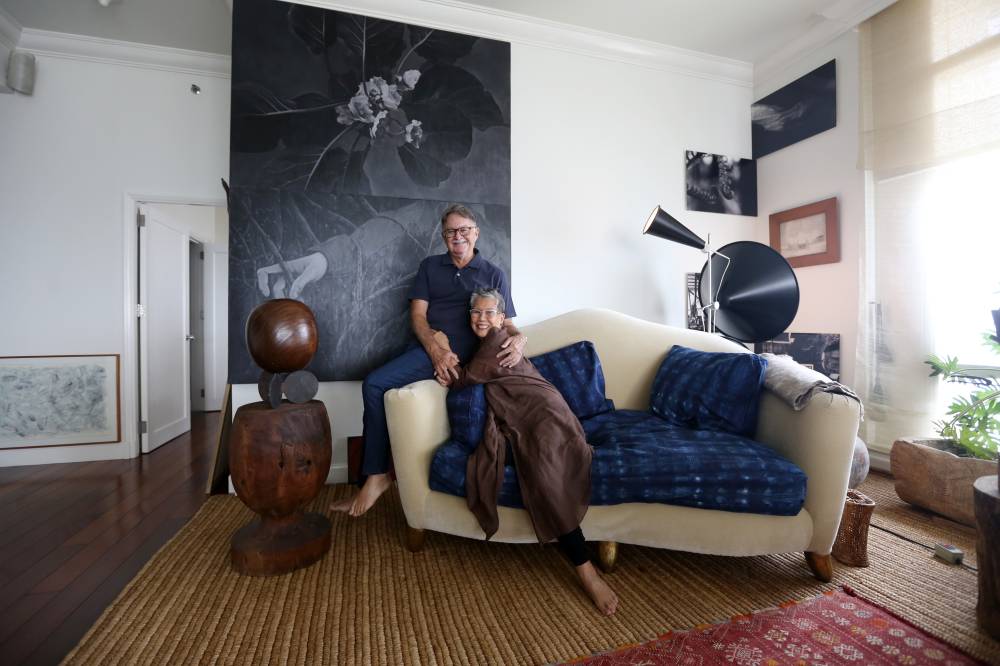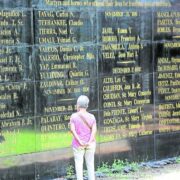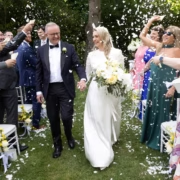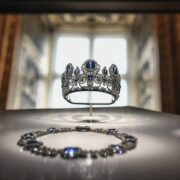One life together, two art collections

In these peculiar times of overpriced art often purchased as merchandise for higher resale, artist-designer Yolanda “Yola” Perez and her American husband, entrepreneur Patrick Johnson, are authentic collectors. For years they have acquired art consistently for art’s sake. Their two condos in Makati, Yola’s home furnishing store Soumak at The Lerato in Bel-Air, and their weekend residence in Laguna illustrate the reality of living with art. Cherished pieces adorn each place, from the private elevator lobby to the condos, all the way to the bathrooms.
Patrick has lost count of his collection of Filipino contemporary art, which includes his wife’s paintings. Yola has kept gifts from her former professor, Roberto Chabet, Father of Philippine Conceptual Art, the kind whose impetus and meaning deliver more impact than the physical output.
Yola’s Chabet collection is, in fact, the result of conversations in the long course of a meaningful relationship between mentor and mentee.
‘Nothing is everything’
Chabet taught at the University of the Philippines’ College of Fine Arts for over 30 years. He would invite students to his home and studio in San Juan, where they waxed philosophical about art and life. And painted, of course. Yola received her first colored drawing from him in 1968, when she was a freshman. It was “Pink Mountain,” a cone of gradient shades from pink to orange.
Yola quotes the late artist as saying, “Nothing is everything.” This specifically reminds her that, for a class with sculptor Eduardo Castrillo, she created a metal box on a stand. Castrillo opened it and saw that it was empty. On closer look, he discerned the word “A-I-R” spelled out in perforated dots on the side.
She explains, “The viewer was supposed to put his head inside the box to breathe. I didn’t realize that, even then, I was a conceptual artist like Chabet.”
Yola figures that her notion of art changed when Chabet gave her “Visions in Motion,” a book of experimental photographs by Laszlo Moholy-Nagy. The Hungarian artist was known for abstractions of color, texture, light and play of shapes. It inspired her to produce photograms, or pictures produced using photographic materials, such as light-sensitive paper, but without a camera.
Whenever they met up until his demise in 2013, Yola recalls, Chabet gave her drawings. “Mostly dots and lines,” she says, collages, paintings of irregular shapes outlined with carpenter’s pencil and filled in with color. “It would take years for anyone to comprehend his works,” she says.
Chabet best described his iconoclasm in the words of Marcel Duchamp, French progenitor of Conceptual Art: “I’m not a revolutionary painter. I don’t seek exaltation. I’m satisfied with fervor.”
His most widely-photographed and exhibited work, “Piero,” is an installation—a red parachute cascading from a ladder while facing an inverted, half-naked torso. It was a collaboration with former student Gerry Tan, who replicated the torso of a slave in the painting “Baptism of Christ” by Italian Renaissance artist Piero della Francesca.
In 1974, Yola was a recipient of the Cultural Center of the Philippines’ Thirteen Artists Awards, initiated in 1970 by Chabet as founding museum director and first curator. Filipinos couldn’t understand Yola’s unconventional art at the time. She proceeded to pour her artistic sensibilities into her store, Soumak, named from a tapestry technique. It specializes in weaving organic material such as abaca and raffia into rugs and window and artsy home decor. “I used Soumak to integrate art with functionality,” she says, “so that it would make sense for people to buy the pieces.”

Ultimate collector
She considers her husband the ultimate collector, having gathered a great number of paintings, shells, native baskets, even old envelopes and seeds.Patrick got his first taste of art as a college student viewing an exhibit of modern art at the Seattle Art Museum. An older visitor sought his reaction and Patrick candidly said he found the pieces incomprehensible. The man invited Patrick to his place, where they got to discuss visual arts at length.
Shortly after arriving in the Philippines in 1978, Patrick visited the Museum of Philippine Art (now Museo Pambata). He met Yola via a logistics business, of which she was a client. She introduced him to the arts circle, and this helped developed his now-informed tastes.
He learned to view artworks solely for their aesthetic worth, and started collecting works that moved him — pottery by Jaime de Guzman and Jon and Tessy Pettyjohn, a large-scale painting by Pardo de Leon, Geraldine Javier’s image of a blackened hand holding a flower, Jonathan Olazo’s gestural abstractions, Juan Alcazaren’s map of the Philippines in reverse, Trek Valdizno’s circles on a tripod, to name just a few.
The modernity of Patrick’s collection is punctuated by an occasional representational style—for instance, an early 19th-century, unsigned portrait of a woman in a Maria Clara restored to its pristine condition by a professional.
Constancio Bernardo’s portrait of a lady is reminiscent of the classical style and natural lighting espoused by his mentor, Fernando Amorsolo. The piece, representative of Bernardo’s diverse approach, always sparks conversation among the Johnsons’ visitors. At Yale School of Art, German-born Josef Albers— considered one of America’s most influential 20th-century art educators— introduced Bernardo to saturated colors and abstraction. Patrick has a few pieces that show Bernardo’s evolution toward becoming the Father of Philippine Op Art. These paintings are of planes of color composed to show depth.
Treasures
Then there’s Ilocano painter Macario Vitalis, whose French influence is evident in his Impressionist landscape.Followers of Philippine modern art will readily recognize among Patrick’s treasures Lee Aguinaldo’s “Light Series,” self-portraits inspired by Rembrandt’s sketches.
Conceptual artist Nilo Ilarde challenges prevailing notions of the flat surface in modern painting by creating a three-dimensional assemblage of studio scraps. Patrick has one of his works that is reminiscent of a Chabet—an arresting collage of scraps and discards.
In the guest room, Yola’s tongue-in-cheek self-portrait is a series of used facial masks that follow the contours of her face, accumulated over a period of 20 years since the opening of Clarins Skin Spa at Rustan’s.
The collection pieces can be provocative— like a cake spiked with teeth and a siopao with worms coming out by ceramicist Patricia Encarnacion. These are magnets for double-takes. But romance is present, too, as in a shelf full of turned wooden bowls by the late furniture maker Osmundo Esguerra.
While Yola’s own collection was born of a rare kinship with a master, Patrick’s trove captures his personal artistic zeitgeist. At any rate, now both in their 70s, the Johnsons are, in a word, content.
Besides, as Patrick plainly puts it, “We have no more space for new acquisitions.”



























